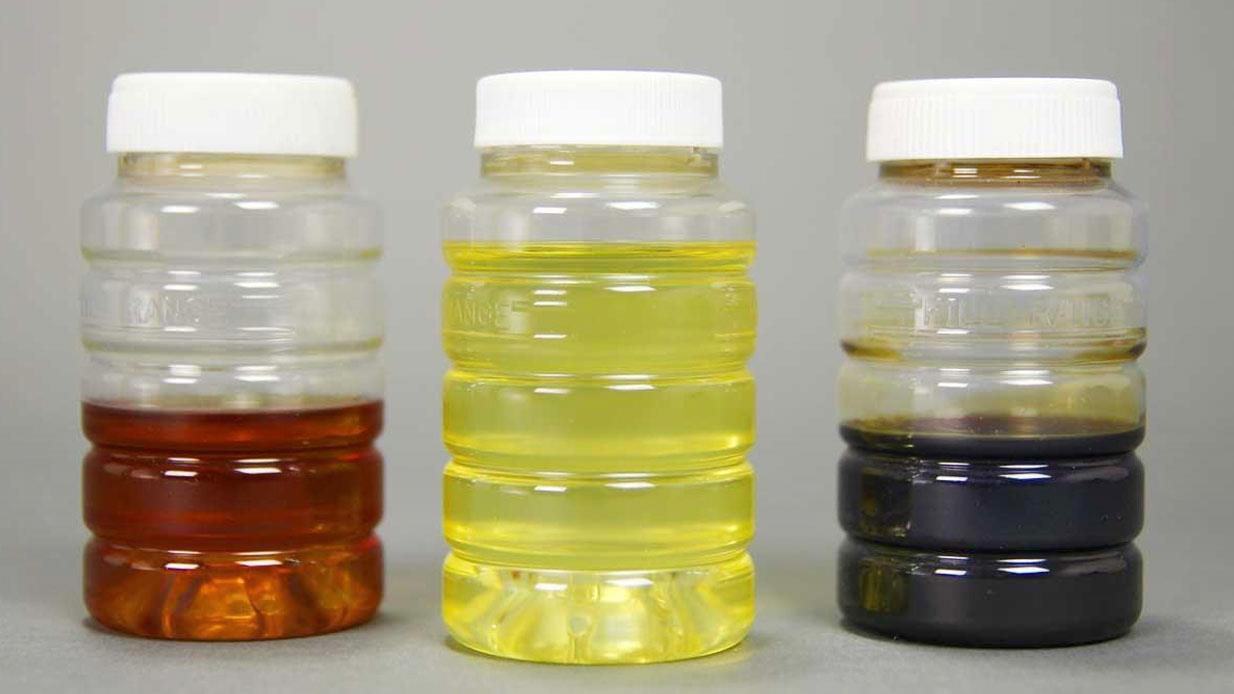What a Change in Oil Color Means

"During our routine equipment inspections, we have noticed that our lube oil appears darker. Is this cause for concern? If so, what should our next steps be?"
A lubricant color change can be cause for concern, as it often indicates the oil's composition or chemistry has been modified. You must first consider the lubricant's original color. New lubricants typically have a color that is related to their viscosity and formula. In general, lower viscosity lubricants like turbine oils and hydraulic fluids have a lighter color than higher viscosity lubricants such as ISO VG 320 circulation oils or gear lubricants.
In addition, certain additives and dyes can affect the original base stock color. The color of new oil may also change if the formula has been modified or if any of the raw materials have been replaced. This type of color change usually does not affect the lubricant's performance or specification, but be sure to confirm this with the lubricant manufacturer.
Keep in mind that an oil naturally becomes darker as it oxidizes. Lubricants oxidize during service due to the combination of the operating temperature and exposure to oxygen in the air. The higher the temperature, the faster the oxidation process and the shorter the lubricant's life. Darkening is a signal of lubricant oxidation. If your oil has become darker faster than expected, check for abnormally high operating temperatures. Excessive temperatures can have a variety of root causes, so it is important to investigate the origin.
Contamination is another common reason why a lubricant changes color. An oil can become darker if there is lubricant cross-contamination or the presence of solid particles from the environment. When an abnormal color change takes place, the presence of contaminants should be explored. If this is the case, the most probable solution would be to change the oil. Depending on the severity, an oil flush may also be required.
If the same lubricant is used in several machines and all of them show a progressive change in oil color, this likely would be an indication of natural lubricant aging. On the other hand, if only a few machines have lubricant discoloration, it would be necessary to identify the origin of the color change.
Finally, whenever an abnormal condition is suspected, it is always best to perform oil analysis to determine the lubricant's health as well as to check for the presence of contaminants. An oil change-out or additional filtration may be needed if contamination has occurred.



_extra_large.jpeg)

